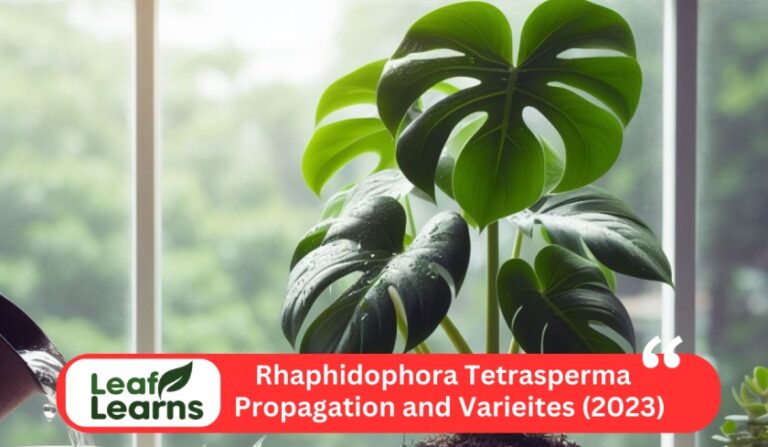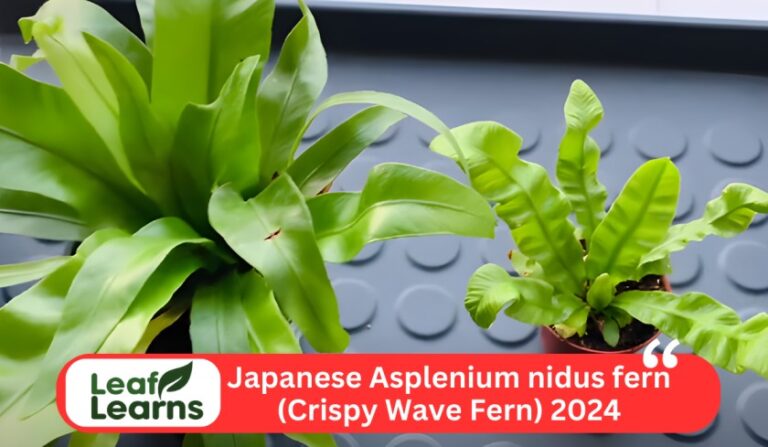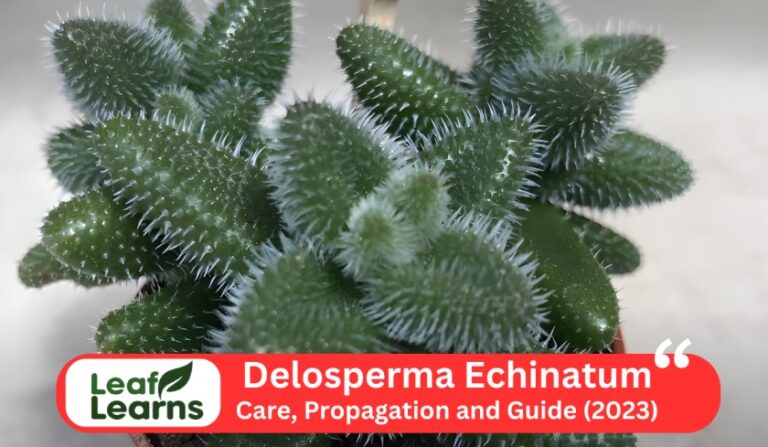Scindapsus Treubii Moonlight Care and Grow (2023)
When you are in a house plant, does it seem to glow from within? An emerald-green, silver-white, and moonlight-blue foliage is the enthralling quality of the Scindapsus Treubii. Aside from its captivating looks, this plant is a must-have for any plant enthusiast thanks to its fascinating history and unique characteristics.

Plant Origin & Classification
Southeast Asia and the Western Pacific are home to the Scindapsus Treubii, which thrives in the dappled sunlight beneath rainforest canopy. This plant belongs to the family Araceae, and shares similar growth habits and an easy-going personality with pothos.
A stunning foliage variation and a slightly more delicate, yet equally resilient spirit distinguish the Scindapsus Treubii from others.
| Common Name | Sterling Silver plant, Moonlight pothos, Treubii pothos, Dark Form |
| Scientific Name | Scindapsus-Treubii Moonlight |
| Family | Araceae |
| Origin | Southeast Asia |
| Plant Type | Indoor, Climbing |
| Size | Ranges from 5 inches to 20 inches tall |
| Lifespan | Perennial |
| Leaf Colour | Dark green with silver markings |
| Leaf Size | 4-6 inches |
| Flower | Rarely flowers, insignificant |
| Light | Indirect, bright light |
| Water | Moderately moist, allow to dry between watering |
| Soil | Well-draining potting mix |
| Temperature | 65-80°F (18-27°C) |
| Humidity | High |
| USDA Zone | 10-12 |
| Fertilizer | Balanced liquid fertilizer during the growing season |
| Propagation | Stem cuttings or division |
| Pruning | Trim to control size and shape |
| Pests | Susceptible to spider mites, aphids, and mealybugs |
| Toxicity | Mildly toxic to pets and humans |
| Uses | Indoor decoration, air purifier |
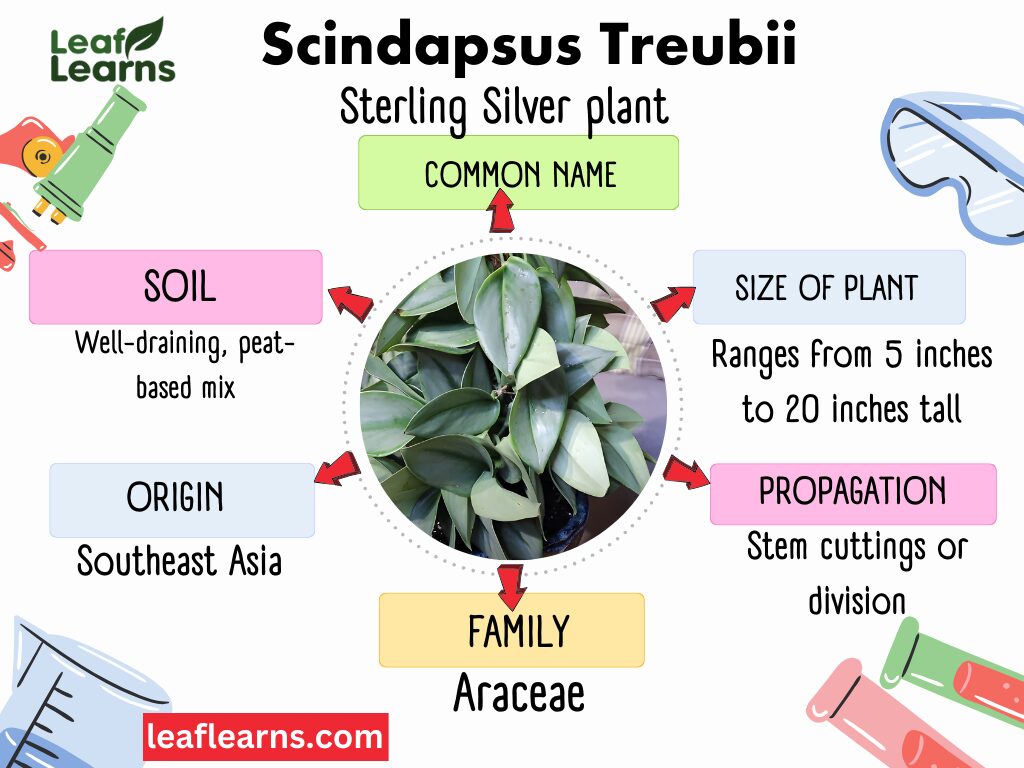
What Makes the Scindapsus Treubii So Special?
Scindapsus Treubii’s mesmerizing leaves will instantly captivate you when you enter a room featuring one. There are a variety of variations on this theme, each offering a unique twist:
- In a silvery sheen, this variety looks like a moonlight reflection, boasting heart-shaped leaves.
- A dark form of this version adds a touch of mystery to any room with deep, almost black leaves flecked with silver.
- Sp. Sumatra: A coveted variety with velvety, large leaves with fine, silver veins contrasting with dark green foliage.
Is the Scindapsus-Treubii Moonlight a Pothos?
Despite sharing similar characteristics with Pothos, the Sterling Silver plant Moonlight is not technically a Pothos.
There is a significant difference in leaf shape and growth pattern between the two, with the Scindapsus-Treubii possessing more delicate, heart-shaped leaves and a slower growth rate.
These plants offer lush greenery and provide air-purifying benefits, making them excellent houseplants.
Contents
- 1 Top Care Tips
- 2 How do you care for a scindapsus treubii?
- 3 Temperature Requirement
- 4 How to Propagating Scindapsus Treubii
- 5 Pruning and Repotting
- 6 How to Get Scindapsus-Treubii to Bloom
- 7 Growth Rate and Size
- 8 Flowering and Foliage
- 9 Underwatering And Overwatering
- 10 How to Keep Your plant Happy
- 11 Common Pests and Diseases
- 12 Why does my plant have yellowing leaves?
- 13 Problems and Solutions or Growing Problems
- 14 Toxicity
- 15 Varieties/Types
- 16 Uses
- 17 Discovering Sterling Silver plant: A Dive into Captivating Varieties
- 18 Cultivating Green Elegance: A Guide to Sterling Silver plant Moonlight Care
- 19 Conclusion
- 20 FAQs
Top Care Tips
Shine bright, silver queen! The leaves of Sterling Silver plant sparkle like moonlight under bright, indirect light. You don’t need disco balls.
Don’t water your plants every day (except on Thirsty Thursdays). Let the soil dry between waterings to avoid soggy roots. Don’t think swamp monsters, think damp sponges.
I need to be fed, Seymour! Scindapsus-Treubii grows like a jungle explorer with a monthly snack of diluted liquid fertilizer. Put the protein shakes on hold.
Offer your Sterling Silver plant moss poles or trellises so it can reach new heights. Put yourself in Tarzan’s shoes, not a couch potato’s.
Encourage bushier growth by pruning those leggy stems. Share cute leaf cuttings with your plant-loving friends for bonus points.
How do you care for a scindapsus treubii?
Light Requirement
Indirect light is its favorite season for Scindapsus-Treubii, a silver stunner that craves bright, indirect light all year long. Imagine a leafy canopy filtering sunlight through dappled shade.
- Sunbathing during the summer is best done in the mornings or evenings, but be careful of harsh midday sun.
- You’ll get an extra glow if you move closer to your windows in the winter. Lighting artificially is also effective!
- During spring or fall, you are sure to enjoy the natural light show, just adjust your exposure as the sun moves.
For taller plants, more light may be needed to reach all the leaves. Grab yourself a light meter or simply observe your leafy friend! Using the right light, your plant will soar.
Water Requirements
Despite its cascading beauty and shimmering silver veins, Sterling Silver plant thrives in water that is kept to a minimum. Instead of gulping, take light sips! Depending on the season, how much and how often to do so varies.
Vine thirsty in summer sun: If the top inch of soil feels dry, your Scindapsus needs a drink every 7-10 days. Be careful not to drown it! Ensure that excess water drains freely.
Plants’ thirst increases as temperatures drop in the winter. Make sure it is completely dry before giving it another watering after 10-14 days.
We are at the beginning of spring, a time of awakening and gentle flow. Make sure the soil is kept moist but not soggy by watering it every 10 to 12 days.
Slow down with autumn’s embrace: Let the days shorten as you imitate nature’s slowing down. It is recommended to water the soil every 12-15 days, letting it dry out a little between waterings.
Soil Requirement
Sips made with fast-draining, airy blends are perfect for summer. In order to simulate their tropical island roots, cactus and succulent mixes work wonders. These beauties aren’t afraid of a quick drink as long as they don’t get their feet too wet.
Winter Wonderland, Water Wise: Reduce watering as the day lengthens. The soil can remain dry for a longer period, like a warm sweater for the roots. To hold onto a bit more moisture, choose a heavier mixture, like a well-draining loam.
When it comes to repotting, spring is the best time! The soil should be fresh, well-draining, and one size bigger than the pot. Like a springtime smoothie for your roots, compost can give your plants a growth spurt.
The perfect mix of summer’s airiness and winter’s heavier elements: autumnal breezes, balanced bliss. As with a cozy fall sweater, a well-draining potting mix combined with perlite or orchid bark keeps things balanced.
Temperature Requirement
A balmy summer evening would be perfect for Scindapsus, who basks happily between 65-75°F (18-24°C). Keep it out of direct sunlight’s fiery grasp instead of cranking up the AC.
As with a warm blanket, the minimum temperature on a chilly night should be 55°F (13°C). Your plant might shiver if it is exposed to cold drafts and frosty windows.
Spring Awakening: The Scindapsus’s tolerance to temperature increases as nature stretches. The temperature should be between 60 and 80°F (15 and 27°C), like the breeze of a spring day. There will be a lot of leafy action!
Leaves change color as they turn autumnal hues, so do our temperature requirements. A comfortable sweater weather vibe is 65-70°F (18-21°C).
Humidity Requirement
In a humid environment, Scindapsus-Treubii thrives. I’ve got you covered, plant parenthood! Here are some humidity hacks for every season!
Summer Sun Plan tropical vacations where 60-70% humidity is the norm. Consider misting your Scindapsus regularly, grouping it with friends who love humidity, or buying a pebble tray. Try to avoid harsh afternoon sun, and instead choose dappled light.
During autumn, the humidity inside might dip as the leaves outside crunch. Plants should be grouped, humidifiers can be used, or your Scindapsus should be placed near a bathroom to maintain a 50-60% humidity level. Don’t skip misting completely, but reduce the frequency!
Cold and calm in a winter wonderland: Make sure the humidity is between 40 and 50 percent. Do not turn up the heat too high, dry air is your enemy. To prevent root rot, mist occasionally, but water properly and use well-draining soil.
The days are getting longer, so misting frequency should also increase. Increase humidity to 50-60% gradually to simulate spring’s natural rise. Take a moment to enjoy those new leaves unfurling like confetti!
Fertilizer Requirement
A little nutritional attention is all it takes for your Sterling Silver plant to thrive. The appetite of a bird changes with the seasons, just like the weather. You don’t have to feed yourself all year long! Here are some tips to keep your silvery sweetheart’s stomach happy throughout the year:
You can enjoy your Scindapsus in spring and summer with plenty of sun and fertilizer. Using a balanced nitrogen fertilizer (like 20-10-10) on a monthly basis will support lush leaf growth. Bottled sunshine, that’s what it is!
The metabolism of your plant slows as the days shorten. Using a diluted solution to avoid fertilizer burn, reduce the feeding to bimonthly snacks.
During the winter months, your Scindapsus hibernates. Don’t use the fertilizer fork! Sleepy plants are more susceptible to damage if they are overfed. Keep the soil moist and look forward to spring’s green feast.
Potting Requirement
The Scindapsus-Treubii, with its cascading silver and green foliage, is a houseplant superstar. But keeping its sparkly charm year-round requires a pot that caters to its seasonal needs.
Summer Sun, Thirsty Roots
- Use a pot with ample drainage holes, such as terracotta or clay. As a result, they breathe well in the hot months, preventing root rot.
- Make sure you water your plants more frequently, allowing the top inch of soil to dry before you water it.
Enjoy a cozy winter with slow sips
- If you currently have a Scindapsus plant in a pot, consider keeping it. It can be stressful for the plant to be replanted in winter.
- The amount of watering should be drastically reduced. Soggy soil is a winter no-no because of cooler temperatures and slower evaporation. Ensure that the top two inches of soil are completely dry before watering.
Spring Showers, Growth Spurts
- Scindapsus can be repotted in spring if it is bursting out of its pot. You should choose a pot that is one size larger and has good drainage.
- In the spring and summer, watering should be increased gradually with the lengthening days and warming temperatures. Make sure your soil drains well!
Foliage in the Fall, steady rhythm
- If the roots are overflowing, there is no need to repot.
- Make sure you water the soil regularly, letting the top inch dry before watering again.
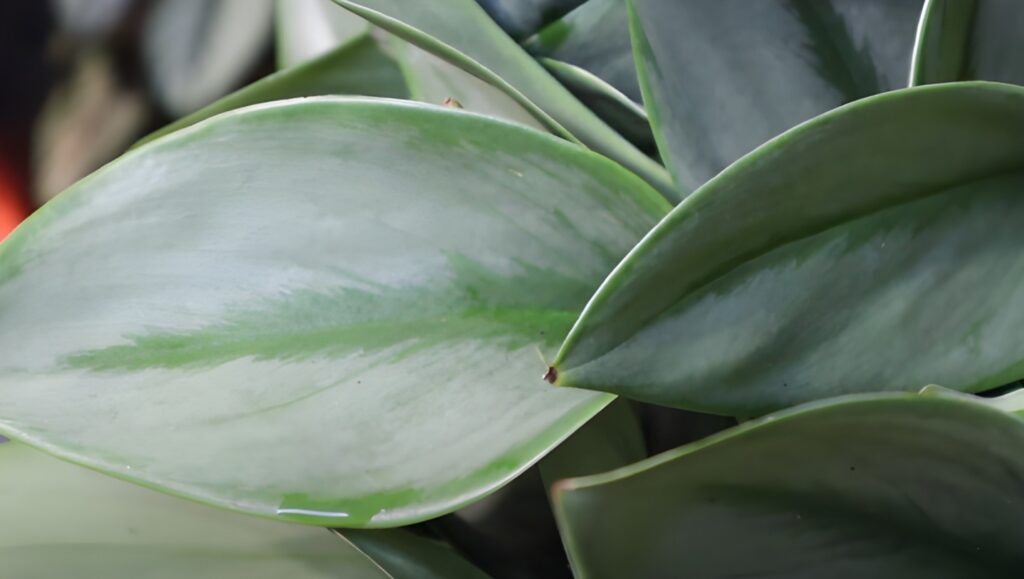
How to Propagating Scindapsus Treubii
There are two types of propagation for this type of plant, So one is the watering method and other is soil method.
Choosing Your Weapon: Soil or Water?
In terms of propagation, you have two main options: water and soil. The two methods are both effective, but they have their own charms. You can observe root development first-hand with water propagation, while soil propagation allows you to transition to independent plant life more quickly. Here are two options we can consider:
Waterborne Adventure
- You will need clean glass containers, fresh water, and scissors to complete this project.
- Choosing healthy stems with at least two or three leaves is a good starting point. The node is the bump at the end of a leaf that connects it to the stem. Cut diagonally just below the node. You should aim for a length of 4-6 inches.
- I’m rooting for you! Make sure the nodes are submerged in water when you place the cuttings in the glass. Overcrowding the container should be avoided. To keep the water fresh and prevent bacteria growth, change it every 3-4 days.
- It takes time for tiny white roots to appear, so be patient. Your plantlets are ready for their next adventure once the roots reach an inch or two in length!
Soil Propagation
- When potting up, choose potting mix with drain holes and small pots that are easy to drain. Make a small indentation in the center of the pots after filling them with the mix.
- Rooting hormone can promote faster root growth when dipped in rooting hormone on your cut stems (optional). The stems should be placed gently into the prepared holes and the soil should be firm around them. Be sure to thoroughly water.
- Keeping the soil consistently moist without being too wet is important for your potted cuttings. They need bright, indirect sunlight to thrive.
Pro-Tips for Lush Propagation
- Avoid spreading bacteria by using sterilized scissors.
- For optimal rooting, maintain a room temperature of 65-75°F.
- Keep your cuttings moist by misting them regularly or soaking them in a sand or pebble tray filled with water.
Pruning and Repotting
Pruning and repotting are two key ways to keep your Scindapsus happy and healthy.
Pruning
- Your plant will become bushier if you prune leggy stems, which will stimulate new growth at the base.
- Keeping it in shape requires snipping off stray vines.
- Scindapsus propagation bonus: Start new plants from pruned cuttings!
Repotting
- The roots coil at the drainage holes during a growth spurt, so choose a pot size one size larger.
- The soil needs to be replenished every 2-3 years by repotting.
- It’s important to have drainage holes in your pot in order to avoid waterlogging
How to Get Scindapsus-Treubii to Bloom
Indirect, bright light mimics their jungle home, which encourages them to display their skills. Not scorching rays, but dappled sunlight.
Make sure the environment is warm (65-75°F) and humid, as if it were a tropical evening. It is possible to achieve great results with pebble trays or misting.
Provide them with balanced fertilizer on a regular basis so they can fulfill their floral ambitions. When it comes to spring and summer, think gentle, diluted doses.
Growth Rate and Size
Do not be fooled by the vine’s moonlit glow. It does not grow rapidly. When properly cared for, this silvery stunner grows to 8 feet.
The thick, heart-shaped leaves of this plant can reach a whopping 20 inches, so the wait will be well worth it. You can also demonstrate your plant parenting prowess with its slow and steady climb.
You can encourage aerial roots to reach for the sky by offering a moss pole or trellis for them to grab onto.
Flowering and Foliage
Foliage Fantasia
- Shape: Sterling Silver plant has heart-shaped leaves, displaying nature’s artistry in every leaf. There are varieties that shine with a silvery sheen, like the ‘Moonlight,’ and others that boast rich, deep green hues, like the ‘Emerald.’
- A leaf can range in size from a tiny one that fits comfortably in your hand to one that cascades like a miniature emerald waterfall. Its leaves can even grow as long as 6 inches on the ‘Golden Pothos’ variety!
- It is colored with a symphony of green hues. Every variety offers a unique shade to enhance your home, from the almost-black depths of the Dark Form to the vibrant jade of the Jade.
Flowering Flash
The foliage of Sterling Silver plant reigns supreme, but its delicate blooms occasionally surprise. It is rare to see them indoors, but when they are in the right conditions, they emerge like tiny, creamy-white spears from spathes (modified leaves).
The fragrance of these flowers adds a touch of sweetness to the air, even if they are not flamboyant
Appearance and Fragrance
Tapestry of Foliage: Let your imagination run wild with images of lush leaves cascading from a basket or gracefully trailing down a shelf.
A vining wonder adorned with stunning leaves, the Sterling Silver plant gets all the attention. Two mesmerizing variations of its signature heart-shaped design are available:
- As if they were dancing in moonlight, these leaves are bathed in a silvery sheen. Intricate patterns are traced in the veins, creating depth and dimension.
- The dark form of this variety evokes an air of mystery. Against a black-green background, the leaves have prominent silver veins that stand out like constellations on a night sky.
Unlike many houseplants, Scindapsus-Treubii doesn’t broadcast its fragrance loudly. It provides a pleasant, subtle surprise instead.
Upon closer inspection, you may detect hints of vanilla or freshly cut grass, a touch of sweetness that adds to its charm.
Underwatering And Overwatering
Underwater blues: crispy, curled leaves and droopy demeanor? It is possible that your Scindapsus is thirsty.
Soak the soil briefly, but let it dry out between waterings. You can usually fix an underwatering much easier than an overwatering!
Overwatering woes: Yellowing patches, mushy leaves, and funky odor? You might have a drowning Scindapsus! Do not water the roots and stop watering immediately. In the event that the roots are brown and mushy, repot them in fresh, well-draining soil.
How to Keep Your plant Happy
An image of dappled sunlight in a rainforest canopy comes to mind when you think of light. Light that is bright and indirect is essential. Be careful not to get harsh sunburns or sulk in the shade.
Less is more when it comes to water! Soak the soil well after letting the top inch dry. Roots that are soggy should be avoided.
Humidity: Misting and steam in the bathroom are both welcome treats. Imagine a tropical spa day for your plants!
In spring and summer, a monthly application of balanced fertilizer will keep those leaves looking gleaming.
Common Pests and Diseases
- Is it true that mealybugs feed on sap? Mealybugs are having a party! Get some soapy water or neem oil and send them packing.
- Is that a spider mite weaving a web under the leaves or a tiny terror? There is stippling and yellowing caused by sap-suckers. Spritz them with water or use insecticidal soap to get rid of them.
- Those sticky leaves with the green hordes gathering are aphids. The buffet is full of aphids. Break the feast by washing them with water or using insecticidal soap.
The root rot disease is caused by overwatering.
Why does my plant have yellowing leaves?
Plant parents, don’t worry! There are several reasons why your Scindapsus-Treubii might have sunshine spots. You should check the soil between drink intervals to see if it has dried out.
Overwatering might lead to swampy roots. A lack of light or nutrient deficiencies can also dim its sparkle, as well as pesky pests. Make sure your soil is fertilized and inspect the leaves for tiny critters.
Problems and Solutions or Growing Problems
Problem: Yellowing Leaves
Solution: Ensure soil moisture is constantly maintained but not waterlogged by adjusting watering frequency.
Problem: Brown Tips and Spots
Solution: Ensure proper lighting exposure and maintain optimal humidity levels.
Problem: Overwatering
Solution: Use a well-draining soil and allow the soil to dry between waterings.
Problem: Pest Infestation (e.g., Mealybugs)
Solution: Clean affected areas with a gentle soap solution or neem oil.
Problem: Root Rot Concerns
Solution: Ensure that the soil drains well, do not overwater, and trim any affected roots if necessary.
Problem: Slow Growth
Solution: Make sure the plant receives enough light, feed it with a balanced fertilizer, and consider repotting it to rejuvenate the soil.
Toxicity
This plant might attract you with its silvery shimmer, but remember, beauty isn’t without its thorns, or in this case, crystals. Despite its stunning appearance, this plant is toxic to humans and pets alike due to its calcium oxalate crystals.
Is this plant safe for pets?
It’s not uncommon for curious kids and adventurous pups to drool, vomit, or have tummy troubles after nibbling. The habit of nibbling by cats puts them at a higher risk. In humans, skin irritation might be the most problematic side effect, but ingesting larger amounts can have more serious consequences.
Varieties/Types
Moonlight: The Luminous Queen
Its understated elegance is what makes Moonlight the most accessible and widely available Treubii variety. Heart-shaped leaves have a milky-green base adorned with a dark green central vein. The lighter margins gracefully fade into the dark green vein.
Dark Form: The Enigmatic Shadow
Dark Form, a Treubii cloaked in emerald obscurity, will captivate you. Almost black leaves flecked with silver lend it an air of sophistication and intrigue
Jade Satin: The Jewel of the Tropics
Those seeking a pop of vibrancy will find Jade Satin to be an excellent choice. There is something soothing and mesmerizing about its leaves, like polished jade pebbles.
Silver Moonlight: The Shimmering Enchantress
The Silver Moonlight variety brings a glamorous twist to Moonlight. A dusting of silvery magic graces the edges of this ethereal beauty, with a milky-green base and dark green veins.
Kingfisher: The Turquoise Treasure
A rare and highly coveted variety of Treubii, Kingfisher dives into the depths of the sea. Featuring a stunning blend of deep teal and vibrant green, its leaves are like turquoise jewels plucked from the Caribbean Sea.
Uses
Beyond the Beguiling Beauty
Whether trailing from baskets or draping down shelves, it instantly adds jungle vibes to any room. Aesthetically, it is useful, but it has far more applications than that.
Airborne Detoxifier
Do you live in a concrete jungle? Sterling Silver plant also removes harmful toxins from your indoor environment, such as formaldehyde and benzene.
Stress-Busting Buddy
The Scindapsus-Treubii is no exception to studies showing that greenery has a calming effect on our minds.
Low-Maintenance Marvel
Plant parents who forget about their plants will love this plant. Even a missed watering or two won’t harm it, as long as it has a moderate amount of light and well-draining soil.
A Climbing Contortionist
Would you like to add a touch of verticality to your space? Climbing is a favorite pastime of the Sterling Silver plant! Create a living green curtain or stunning jungle wall by providing a moss pole or trellis.
Pet-Friendly Pal
Even homes with pets filled with playful pets can enjoy Treubii pothos, as it isn’t toxic to them.
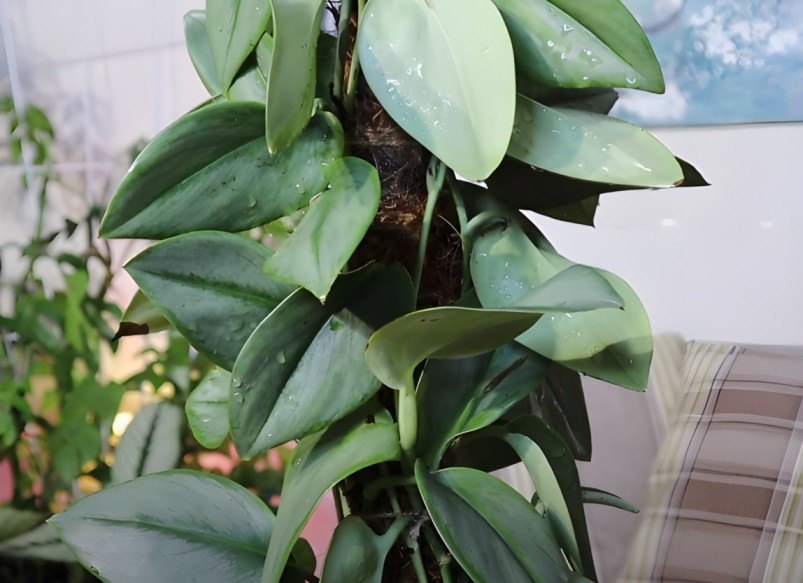
Discovering Sterling Silver plant: A Dive into Captivating Varieties
In the realm of Scindapsus Treubii varieties, enthusiasts often seek the unique and visually striking options available. From the coveted scindapsus-treubii albo with its elegant white variegation to the mysterious allure of scindapsus treubii nearly black, each variant presents a distinct personality within the Scindapsus family
The sought-after scindapsus-treubii moonlight albo variegated and Sterling Silver plant dark form variegata showcase the plant’s adaptability to different color patterns, while scindapsuss treubii moonlight aurea brings a touch of golden charm.
For those fascinated by the darker side, the Sterling Silver plant black dove and scindapsus treubii dark silver offer a mysterious and sophisticated aesthetic.
With a multitude of options, including treubii pothos dark form for sale, enthusiasts can curate a diverse collection that adds depth and intrigue to their indoor spaces.
Cultivating Green Elegance: A Guide to Sterling Silver plant Moonlight Care
Ensuring the well-being of these captivating varieties involves mastering the art of Scindapsus-Treubii Moonlight care. From addressing brown tips and spots to understanding the plant’s response to light conditions, caretakers embark on a journey of nurturing these botanical wonders.
Comprehensive guides on how to care for scindapsus-treubii moonlight, including insights into its growth rate, humidity preferences, and potting mix requirements, empower plant enthusiasts to create an optimal environment.
Amidst discussions on propagation techniques, the allure of seeing Sterling Silver plant moonlight trailing or climbing becomes a rewarding aspect of tending to these remarkable specimens.
As caretakers explore the intersection of Sterling Silver plant varieties and Moonlight care, the horticultural journey becomes a rich tapestry of diversity and meticulous cultivation.
Conclusion
As a houseplant, Treubii plant is an enchanting luminary, woven with tales of tropical allure and resilient charm.
From Southeast Asia, its Araceae lineage sets it apart from other plants, displaying distinctive types like the enigmatic dark form and the moonlit marvel.
Besides being an aesthetic marvel, this air-purifying magician also reduces stress and creates a serene haven.
There is nothing more verdant than the leaves of Scindapsus-Treubii, which trail gracefully or climb with vigor, whispering nature’s timeless elegance in every leaf and bloom.
With its silver leaves and moonlit grace, allow the Sterling Silver plant to illuminate your botanical journey.
FAQs
Is Scindapsus Treubii rare?
Although some varieties of Scindapsus are rare, the Treubii is readily available at nurseries and online stores.
What’s the common name for Scindapsus Treubii?
The Silver Pothos is also known as the Silver Satin Pothos or Epipremnum Treubii, among others.
What is Scindapsus Treubii?
It has velvety, silver-green leaves with dark veins that make it an eye-catching tropical vine. Your space will be filled with lush vibes, and the air will be purified!
Is Scindapsus Treubii a pothos?
Nope! While often referred to as “Silver Pothos”, it’s a distinct species in the Epipremnum genus, similar but not identical to Pothos.
Are Scindapsus hard to grow?
No, not at all! These plants thrive in light conditions and well-drained soil, and they’re considered easy-going plants. It’s perfect for plant parents who are just starting out!
Is Scindapsus Silver Lady rare?
Although it is less common than standard Treubii, the Silver Lady variety has smaller, brighter leaves.
Is Scindapsus Treubii nearly black?
That’s not right! Despite being silvery-green, its leaves are not black, but they have contrasting dark veins.
How to grow Scindapsus Treubii indoors?
Water the top inch of soil when it dries out and provide moderate light and well-draining soil. Extra humidity can be achieved by misting occasionally. Choose an area that is shady and protected outdoors.
How fast does Scindapsus Treubii grow?
Under ideal conditions, it usually produces a few new leaves each month.
How tall does Scindapsus Treubii grow?
With support, it can reach several feet in height! Prune trailing stems back if you want it bushier.
How to make Scindapsus Treubii grow faster?
During spring and summer, it will grow best when exposed to bright, indirect light, constant moisture, and a little fertilizer.
Why is my Scindapsus Treubii dying?
Make sure the plant is not overwatered, has enough light, or isn’t suffering from root rot. Care routines should be adjusted accordingly.
Why is my Scindapsus Treubii drooping?
There are several factors that can cause drooping, including underwatering, drafts, and extreme temperatures. Make sure the plant is properly watered, adjust its location, and raise its temperature as needed.
How cold can Scindapsus Treubii tolerate?
To maintain optimal health, keep the temperature above 50°F (10°C). Frost is usually not a problem, but brief dips into cooler temperatures are usually fine.
Is Scindapsus Treubii toxic to cats and dogs?
These furry friends won’t become ill if ingested, but they may get a mild stomach upset if ingested. Pets should not be allowed near plants.
Is Scindapsus Treubii toxic to humans and children?
Avoid giving the plant material to children and pets, as mild irritation can result if it is ingested.
Is Treubii moonlight the same as Philodendron moonlight?
Nope! Despite their similar names, these are different plants from different genera. It is a Scindapsus moonlight that is Treubii moonlight, and it is a Philodendron moonlight that is Philodendron moonlight.


